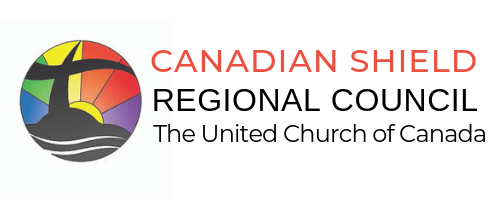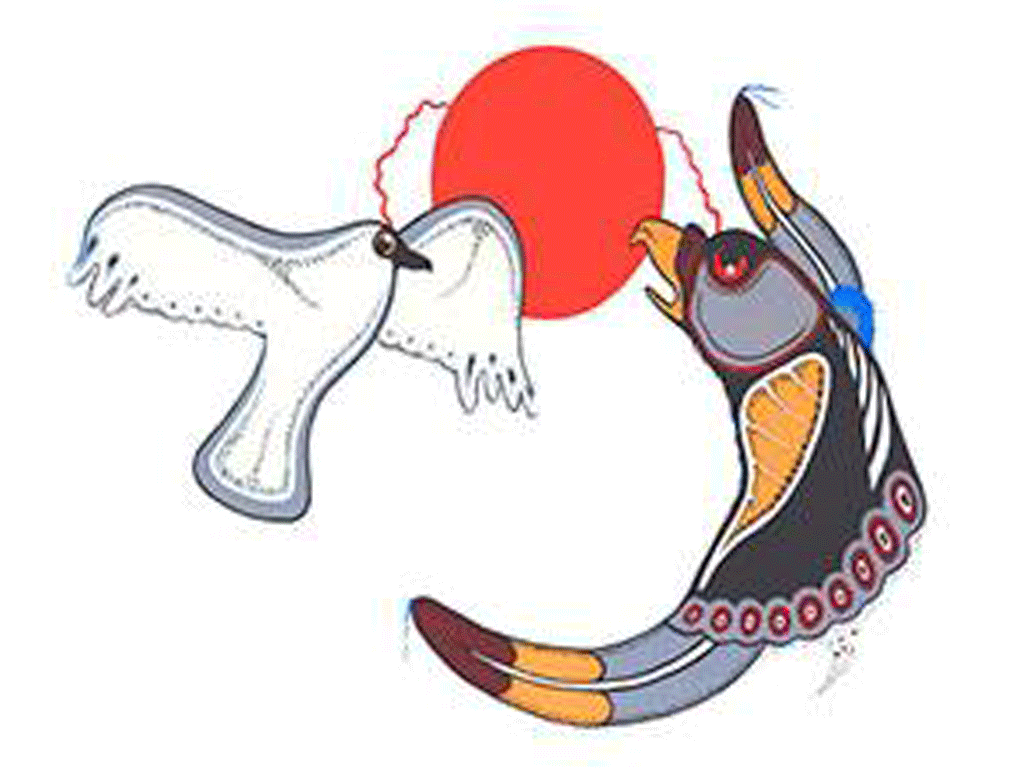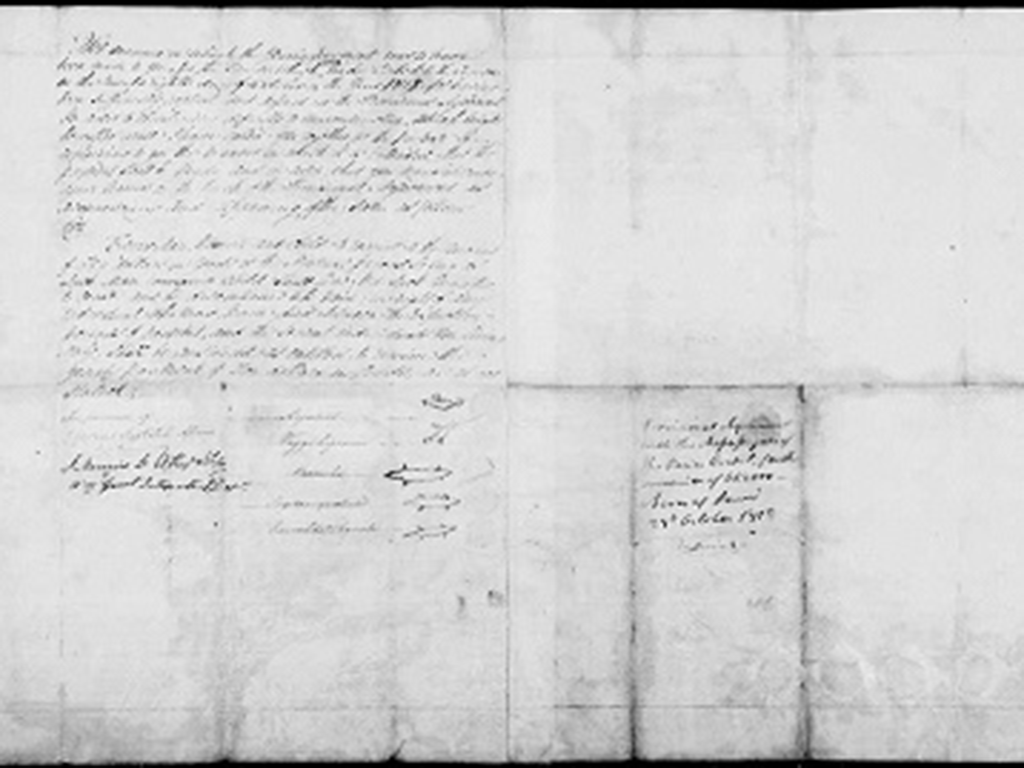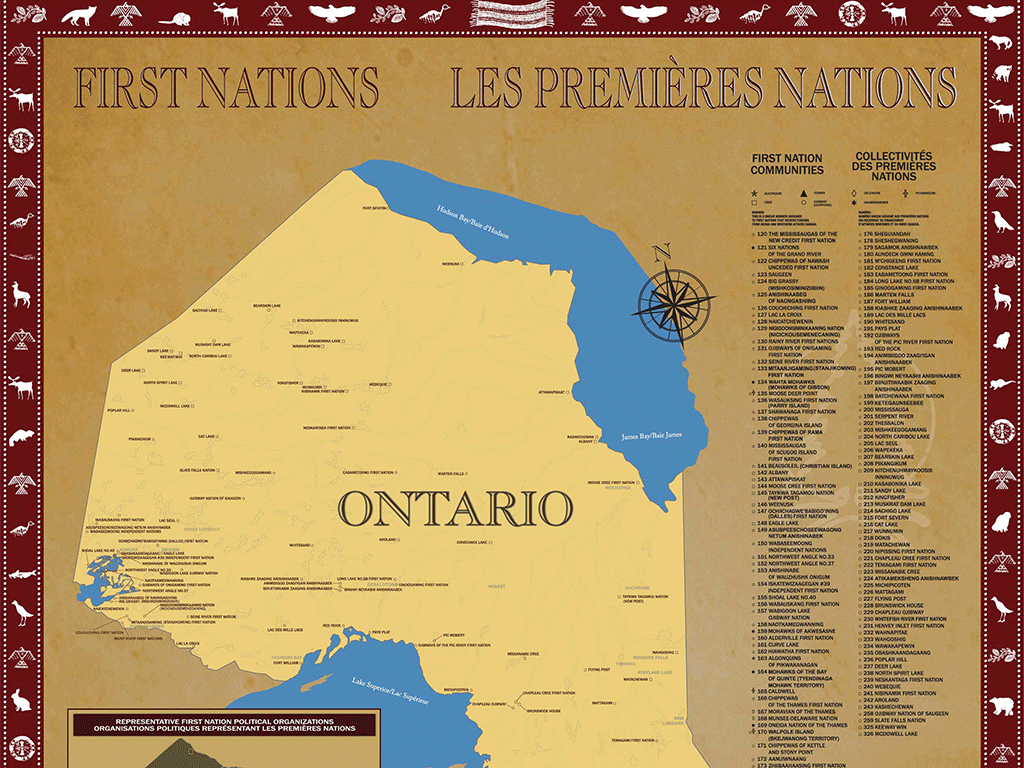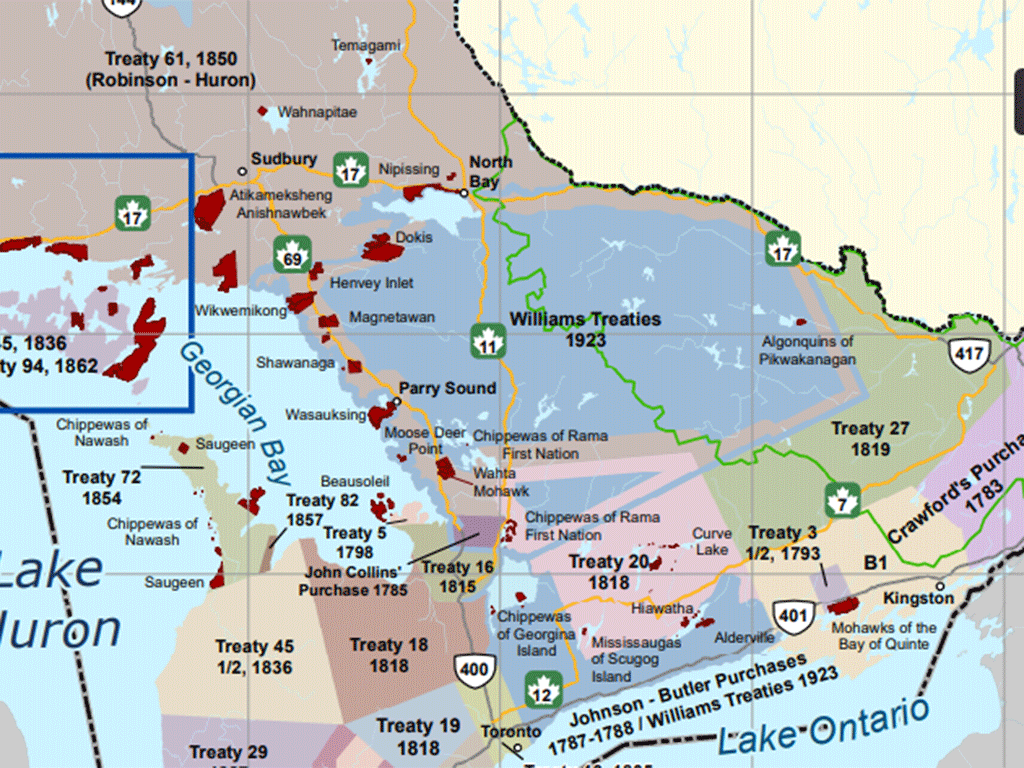
Acknowledging Territory
Quick links to sections on this page
What does Right Relations Mean | First Apology | Manitou Art Collection | Resources | Staff Support
Territorial Acknowledgment
Canada is Indigenous territory. It is respectful protocol to acknowledge at the start of every gathering or meeting the particular nation(s) that had a relationship with the land you are on since time immemorial. In The United Church of Canada it has become common practice to acknowledge the land on which we gather. It is a small step toward reconciliation but it does not stop with some words. When you begin your meetings or gatherings by acknowledging the land on which you are worshiping, working, and living, you also acknowledge the presence of Indigenous people in the present as well as the past before colonization. You acknowledge connection and disrupted connection to the land and that there are things you need to do to act on your words and reconnect relationships. As one of the church parties to the Indian Residential Schools Settlement Agreement, The United Church of Canada intentionally responds to the 2015 Truth and Reconciliation Call to Action #49:
Call to Action #49
In other words, Indigenous people and nations did not give up their lands that they had been on for thousands of years, Europeans did not “discover” Canada or arrive on an uninhabited land, treaties were not honoured.
Where to Begin A Territorial Acknowledgement
The process of writing a territory or land acknowledgment is as important a step toward reconciliation as saying or printing it. Start by doing your own research. Avoid the temptation to ask someone to give you an acknowledgment statement. If you aren’t sure whose land you are on, check www.native-land.ca or www.whose.land/en/ interactive map web resources to find out. Use and learn how to pronounce Indigenous names, e.g. Attawandaron instead of “Neutral”. Recognize the Métis people. Is there an Indigenous Friendship Centre near you? A college or university with an Indigenous studies program? See how they acknowledge the territory and who wrote it. Draft a sincere acknowledgment of your own. Talk to them about what an appropriate relationship might be for your group or church. Use respectful terminology. Capitalize Indigenous, Métis.
Possible Components of an Acknowledgment
- Identifying traditional Indigenous territory
- Naming treaty agreements
- Re-affirming wampum traditions, like “The Dish With One Spoon”
- Lifting up commitments, like the Truth and Reconciliation Commission Calls to Action and The United Nations Declaration on the Rights of Indigenous Peoples
- Expressing and connection one’s own connections to land, creation, and ancestry
- Confronting traditional texts that have been used to justify colonization, including both biblical and historical frameworks like the Doctrine of Discovery
- Connectioing to contemporary struggles for justice
Duties and Responsibilities
There are duties and responsibilities that go with making a territorial acknowledgment. Change the words periodically, perhaps to reflect a changing context, so that your acknowledgment does not become a meaningless statement. Consider how your scripted land acknowledgment connects with the purpose of your gathering. Consider the acknowledgment an opportunity to reflect, engage in a sometimes uncomfortable conversation, and make room for Indigenous perspectives and inclusion. If you are on treaty territory, historically negotiated in good faith, you are a treaty person today. Take time to learn about the treaty. If you are on unceded territory (land that was never ceded or legally signed away to the Crown or Canada), take time to learn about that history. Whether you are a descendant of settlers by choice or circumstance, new arrival, refugee, or descendant from the slave trade, you came to Indigenous land. Whose land did you and/or your ancestors come to? What is your relationship with the land and the people today and what can you do to make reconciliation real? All this is in the work of territorial acknowledgment.
Suggestions for Further Non-Indigenous Action
- Change the wording periodically so that the statement does not become meaningless or rote
- Put a territorial acknowledgment on a poster in a public place in your church
- Take time to get to know the Indigenous peoples whose traditional land you are on and learn about the treaty that was made or what unceded means
- Read “Acknowledging the Territory Statements are Just A Beginning in the Steps Toward Reconciliation” by Rev. Matthew Stevens and perhaps form a study circle to learn about territorial acknowledgment and map next steps
- Share your own or your ancestors’ stories of coming to this land
- Get to know the Indigenous United Churches and communities within your regional council
- Refer to “community” and the community’s name rather than “reserve” (and not reservation)
Examples of Territorial Acknowledgements
Here are some really great examples of Territorial Acknowledgements from different organizations across Ontario.

An example from Keswick-Ravenshoe Pastoral Charge
(We are welcomed) to this piece of land that has been for thousands of years the territories of the Longhouse Confederacy, Anishinaabe, and Mississaugas. We thank the seven nations that signed the Williams Treaties, who allow us to share this land. We acknowledge the First Nations people, their history, spirituality, languages, and cultures. Among the Ojibwa, Anishinaabe, and Chippewas, we acknowledge in particular the Chippewas of Georgina Island First Nation as our close neighbour and friends, with whom we learn to live in peace and friendship.
An example from Emmanuel College, University of Toronto
Statement on Acknowledgement of Traditional Land
Adapted from a revised statement by the Elders Circle (Council of Aboriginal Initiatives) from November 6, 2014
“As we gather together (at Emmanuel College), we acknowledge this sacred land on which the University of Toronto operates. It has been a site of human activity for 15,000 years. This land is the territory of the Huron-Wendat and Petun First Nations, the Seneca, and most recently, the Mississaugas of the Credit River. The territory was the subject of the Dish With One Spoon Wampum Belt Covenant, an agreement between the Iroquois Confederacy and Confederacy of the Ojibwe and allied nations to peaceably share and care for the resources around the Great Lakes. Today, the meeting place of Toronto is still the home to many Indigenous people from across Turtle Island and we are grateful to have the opportunity to work in the community, on this territory. We are also mindful of broken covenants and the need to strive to make right with all our relations.”
An example from Toronto Metropolitan University
“Toronto is in the ‘Dish With One Spoon Territory’. The Dish With One Spoon is a treaty between the Anishinaabe, Mississaugas and Haudenosaunee that bound them to share the territory and protect the land. Subsequent Indigenous Nations and peoples, Europeans and all newcomers have been invited into this treaty in the spirit of peace, friendship and respect.
The “Dish”, or sometimes it is called the “Bowl”, represents what is now southern Ontario, from the Great Lakes to Quebec and from Lake Simcoe into the United States. *We all eat out of the Dish, all of us that share this territory, with only one spoon. That means we have to share the responsibility of ensuring the dish is never empty, which includes taking care of the land and the creatures we share it with. Importantly, there are no knives at the table, representing that we must keep the peace. The dish is graphically represented by the wampum pictured above.
This was a treaty made between the Anishinaabe and Haudenosaunee after the French and Indian War. Newcomers were then incorporated into it over the years, notably in 1764 with The Royal Proclamation/The Treaty of Niagara.”
United Church Resources
There are many resources to help non-Indigenous people get started in a good way:
- “Acknowledging the Territory in Worship” is a resource on the United Church website and although dated, it still has helpful background information and examples
-
by Matthew Stevens
- The Doctrine of Discovery backgrounder
- The Repudiation of the Doctrine of Discovery: A Biblical Reflection
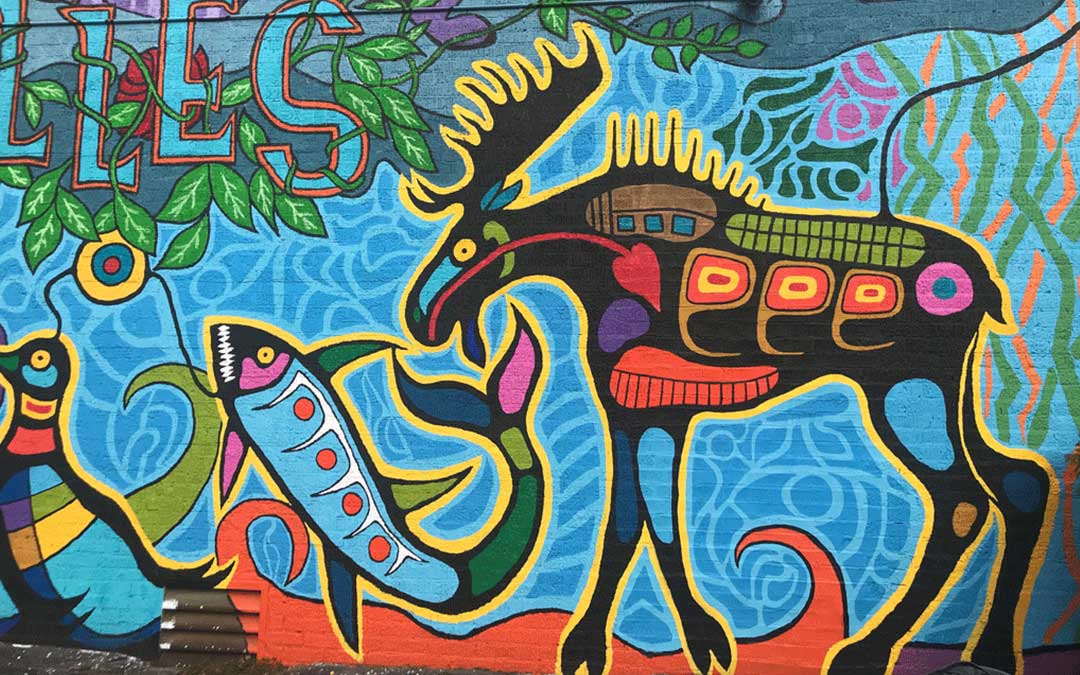
(Pictures to the upper right and bottom of this page) Eighth Fire Prophecy Mural in Roncesvalles village Toronto by Philip Cote and Jim Thierry Bravo. Entitled The Original People Leading to the Eighth Fire, the mural presents the stories of the indigenous peoples who first walked the land where Roncesvalles Village now stands. A few local buildings from the last century emerge from the word ‘Roncesvalles’ which is heavily intertwined with foliage. Integrated into the wordmark is a symbol for The Eighth Fire. Read more here on the Roncesvalles BIA.
Additional Resources
Understanding the Land Acknowledgement: A Video from York University
Staff Support

Melody Duncanson-Hales
Minister, Community of Faith Support
Phone: 1-833-236-0281 Ext. 4
Email: MDuncanson-Hales@united-church.ca
Serves in: Canadian Shield Regional Council
Location: Teleworks from home
Role: Melody provides support for the region by encouraging and connecting communities of faith as they adapt and experiment in changing times.
Contact Melody about: Community Ministries, Congregational Finance, Covenants, Grants, Property, and Transitions - amalgamations, collaboration, closures.
More about Melody...
